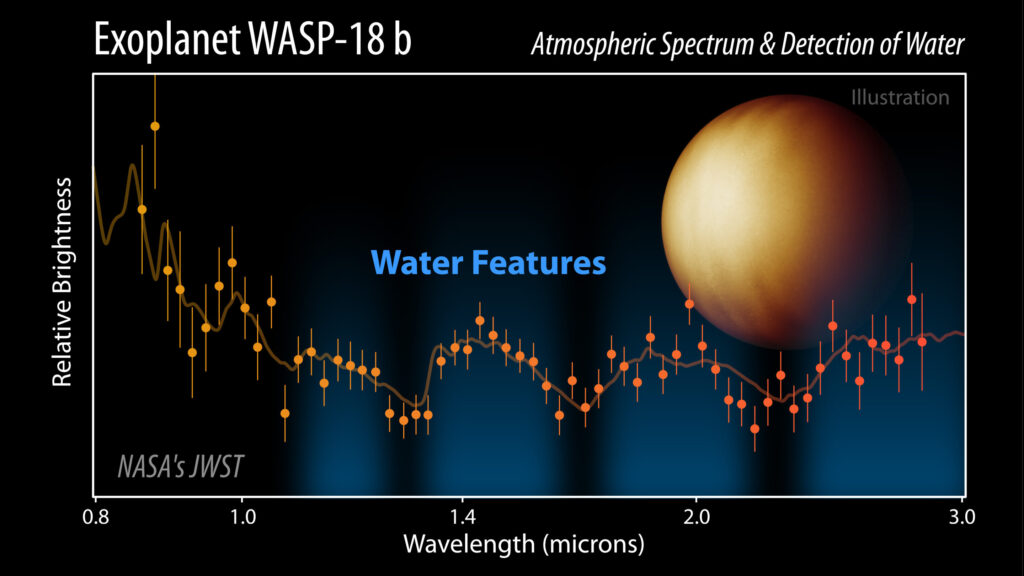A team of researchers from the University of Montreal used the James Webb Telescope (JWST) to explore the atmosphere of the ultra-hot Jupiter WASP-18 b. They managed to make a temperature map of the exoplanet, as well as find traces of water.
Planet that is hotter than the stars
WASP-18 b orbits a star of spectral class F, located at a distance of 400 light-years from Earth. It is a gas giant. With similar dimensions to Jupiter, its mass exceeds the mass of the largest planet in the Solar System by ten times.

The orbit of WASP-18 b passes at a distance of only 3 million km from its parent star. Because of this, it is in tidal capture and is constantly turned to it by the same side, which is heated to a temperature of 2700 °C. This is comparable to the surface temperature of the Proxima Centauri star closest to the Sun.
Water in the atmosphere
During observations using the NIRISS instrument, JWST was able to compile a temperature map of WASP-18 b. It showed significant differences. The point of the exoplanet that receives the most starlight is almost 1000 degrees hotter than its terminator — the light dividing line between the illuminated and unlit side.

Given such significant temperature contrasts, the researchers expected to find powerful winds blowing in the east-west direction. However, JWST failed to find any trace of them. A possible explanation is that the gas giant has a very powerful magnetic field, which affects the processes of atmospheric circulation. In this case, heat transfer to WASP-18 b is carried out not along the east-west line, but from the equator to the north and south poles.
JWST also has been able to record that with increasing altitude, the temperature of the atmosphere of WASP-18 b increases by hundreds of degrees. Other findings include traces of water found in the exoplanet spectrum. Since most H2O molecules are destroyed at such high temperatures, the find serves as an excellent demonstration of the sensitivity of JWST instruments.
Existing models indicate that under the influence of tidal forces, WASP-18 b is gradually approaching its star and will be absorbed by it in just a million years, which is literally an instant by astronomical standards. At the same time, some scientists admit that there are still unknown mechanisms slowing down this process. In the future, astronomers hope to conduct additional observations of WASP-18 b to more accurately determine its orbital characteristics and calculate the remaining lifetime of the gas giant.
According to https://phys.org
Follow us on Twitter to get the most interesting space news in time
https://twitter.com/ust_magazine

